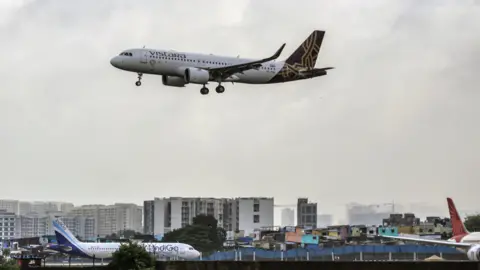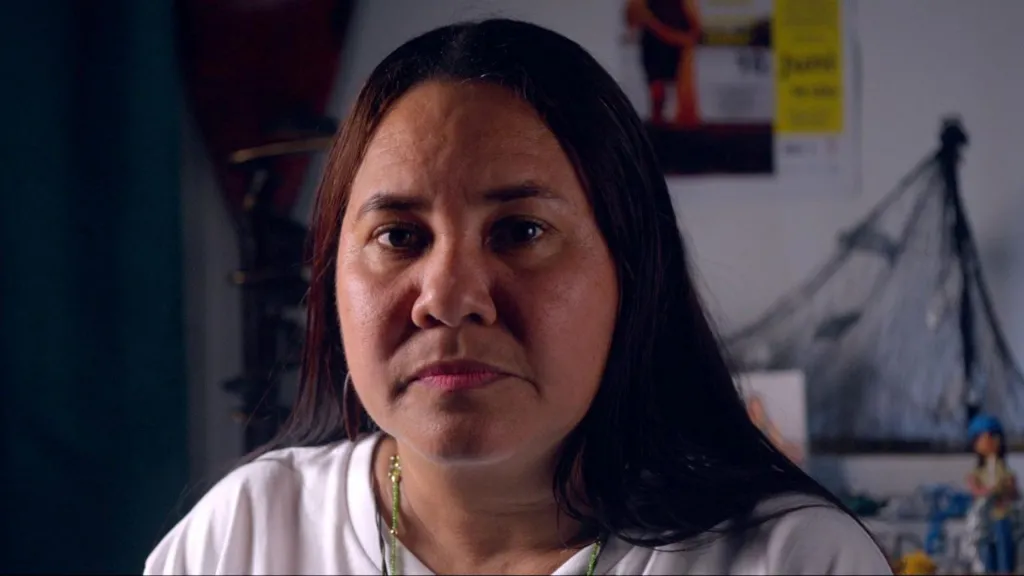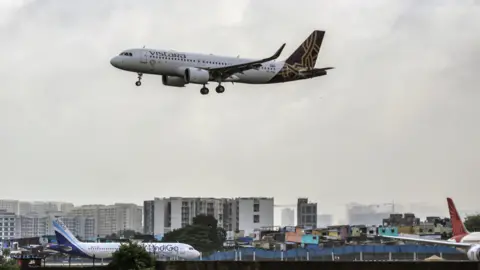 Getty Images
Getty ImagesIndian full-service carrier Vistara will operate its last flight on Monday, after nine years in existence.
A joint venture between Singapore Airlines and the Tata Sons, Vistara will merge with Tata-owned Air India to form a single entity with an expanded network and broader fleet.
This means that all Vistara operations will be transferred to and managed by Air India, including helpdesk kiosks and ticketing offices. The process of migrating passengers with existing Vistara bookings and loyalty programmes to Air India has been under way over the past few months.
“As part of the merger process, meals, service ware and other soft elements have been upgraded and incorporates aspects of both Vistara and Air India,” an Air India spokesperson said in an email response.
Amid concerns that the merger could impact service standards, the Tatas have assured that Vistara’s in-flight experience will remain unchanged.
Known for its high ratings in food, service, and cabin quality, Vistara has built a loyal customer base and the decision to retire the Vistara brand has been criticised by fans, branding experts, and aviation analysts.
The consolidation was effectively done to clean up Vistara’s books and wipe out its losses, said Mark Martin, an aviation analyst.
Air India has essentially been “suckered into taking a loss-making airline” in a desperate move, he added.
“Mergers are meant to make airlines powerful. Never to wipe out losses or cover them.”
To be sure, both Air India and Vistara’s annual losses have reduced by more than half over the past year, and other operating metrics have improved too. But the merger process so far has been turbulent.
The exercise has been riddled with problems – from pilot shortages that have led to massive flight cancellations, to Vistara crew going on mass sick leave over plans to align their salary structures with Air India.
There have also been repeated complaints about poor service standards on Air India, including viral videos of broken seats and non-functioning inflight entertainment systems.
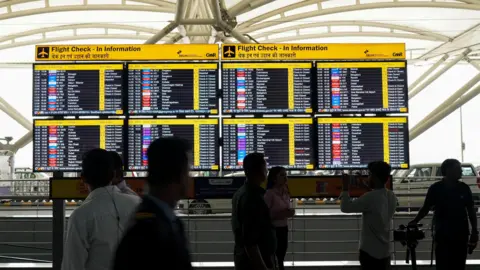 Getty Images
Getty ImagesThe Tatas have announced a $400m (£308m) programme to upgrade and retrofit the interiors of its older aircraft and also a brand-new livery. They’ve also placed orders for hundreds of new Airbus and Boeing planes worth billions of dollars to augment their offering.
But this “turnaround” is still incomplete and riddled with problems, according to Mr Martin. A merger only complicates matters.
Experts say that the merger strikes a dissonant chord from a branding perspective too.
Harish Bijoor, a brand strategy specialist, told the BBC he was feeling “emotional” that a superior product offering like Vistara which had developed a “gold standard for Indian aviation” was ceasing operations.
“It is a big loss for the industry,” said Mr Bijoor, adding it will be a monumental task for the mother brand Air India to simply “copy, paste and exceed” the high standards set by Vistara, given that it’s a much smaller airline that’s being gobbled up by a much larger one.
Mr Bijoor suggests a better strategy would have been to operate Air India separately for five years, focusing on improving service standards, while maintaining Vistara as a distinct brand with Air India prefixed to it.
“This would have given Air India the time and chance to rectify the mother brand and bring it up to the Vistara level, while maintaining its uniqueness,” he adds.
Beyond branding, the merged entity will face a slew of operational challenges.
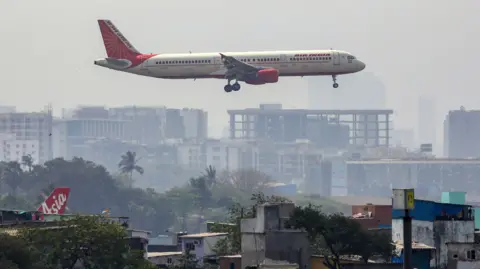 Shutterstock
Shutterstock“Communication will be a major challenge in the early days, with customers arriving at the airport expecting Vistara flights, only to find Air India branding,” says Ajay Awtaney, editor of Live From A Lounge, an aviation portal. “Air India will need to maintain clear communication for weeks.”
Another key challenge, he notes, is cultural: Vistara’s agile employees may struggle to adjust to Air India’s complex bureaucracy and systems.
But the biggest task for the merged carrier would be offering customers a uniform flying experience.
These are “two airlines with very different service formats are being integrated into one airline. It is going to be a hotchpotch of service formats, cabin formats, branding, and customer experience. It will involve learning and unlearning, and such a process has rarely worked with airlines and is seldom effective,” said Mr Martin.
Still, many believe Vistara had to go – now or some years later.
A legacy brand like Air India, with strong global recognition and ‘India’ imprinted in its identity, wouldn’t have allowed a smaller, more premium subsidiary to overshadow its revival process.
Financially too, it makes little sense for the Tatas to have two loss-making entities compete with one another.
The combined strength of Vistara and Air India could also place the Tatas in a much better position to compete with market leader Indigo.
The unified Air India group (including Air India Express, which completed its merger with the former Air Asia India in October) “will be bigger and better with a fleet size of nearly 300 aircraft, an expanded network and a stronger workforce”, an Air India spokesperson said.
“Getting done with the merger means that Air India grows overnight, and the two teams start cooperating instead of competing. There will never be one right day to merge. Somewhere, a line had to be drawn,” said Mr Awtaney.
But for many Vistara loyalists, its demise leaves a void in India’s skies for a premium, full-service carrier – marking the third such gap after the collapse of Kingfisher Airlines and Jet Airways.
It’s still too early to say if Air India, which often ranks at the bottom of airline surveys, can successfully fill that void.
